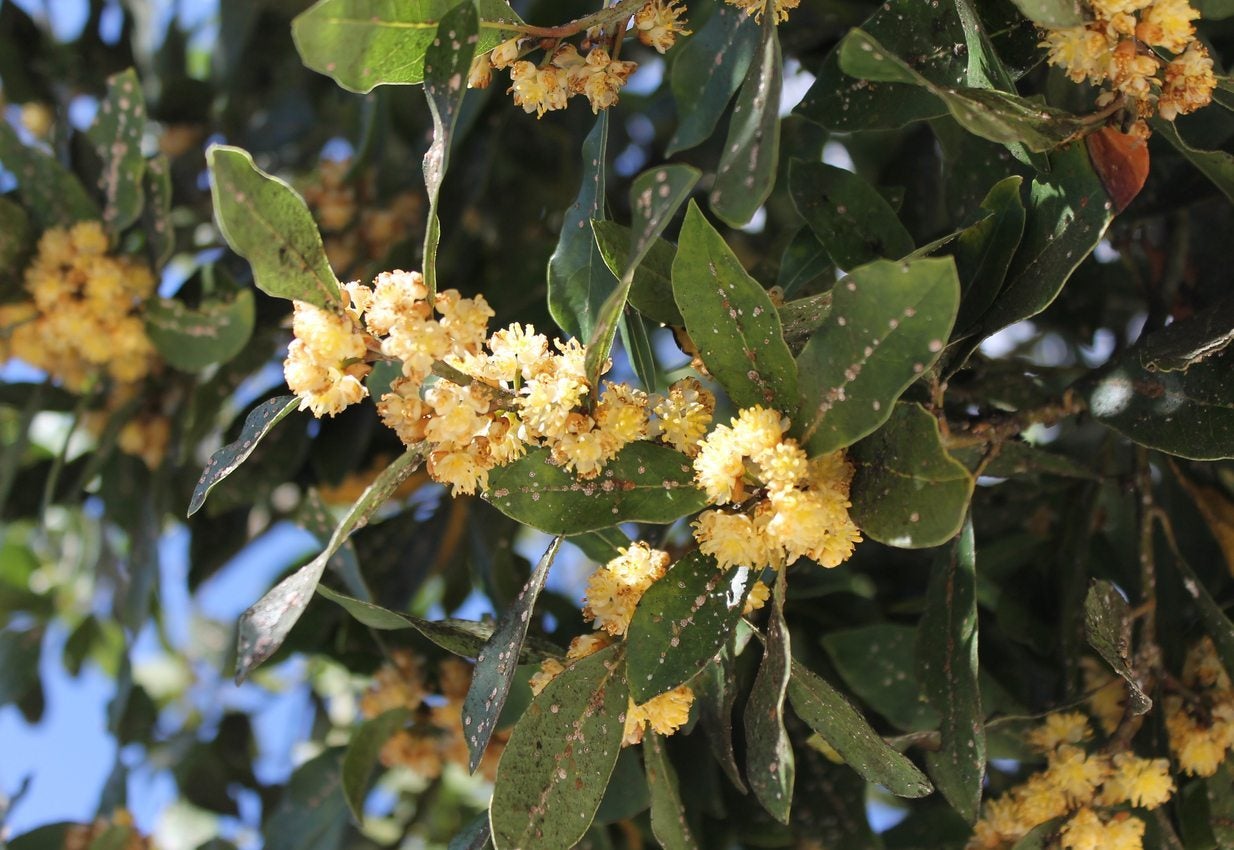How To Treat Bay Pests : Dealing With Pests On A Bay Tree


Bay trees seem remarkably resistant to most pests. Perhaps it's the pungent oil in the aromatic leaves. In the case of sweet bay, the leaves are often used in recipes, which means that treating pests on a bay tree requires organic, food safe methods. Most bay tree insects are foliar feasters, but there are a few boring insects that can cause damage to the trunk and twigs. Read on to find out how to treat bay pests in a safe and non-toxic manner.
About Bugs That Eat Bay Leaves
Bay laurel is a remarkably adaptable temperate zone plant. It has few disease or pest issues and is easy to cultivate. There are few bugs that eat bay leaves, in part because of their intense foliar oil. Most pests on a bay tree will be boring or sap sucking, favoring the stems and woody parts of the plant. Some are easy to spot, while others almost require a microscope. Dealing with bay tree pests starts with figuring out which insect is offending the plant. Then control measures can come into play as you get your tree back into perfect health. The primary foliar pests on bay trees are aphids and psyllids. Aphids are soft bodied insects that may be brown, black, white, green or even red. They cling in colonies to stems or leaves, often in a clustered mass. These insects suck sap and can eventually cause leaf stippling and low vigor in the entire plant. Similarly, psyllids are sap sucking tiny insects. You are more likely to spot them by their cast off waxy exoskeletons. Both types of insect secrete honeydew, a sticky substance which may cause sooty mold. The mold coats the leaves and reduces the plant's ability to gather solar energy and respirate. Use neem oil for treating bay tree pests of this type. Spray it onto all parts of the plant using the formula on the bottle. Occasionally, thrips can also attack leaves. These are difficult to spot but should respond to neem treatments as well.
Other Pests on a Bay Tree
Boring insects cause damage by tunneling in the xylem or vascular tissue of the tree. Adults are small brownish black beetles, but it is the larvae which do the most damage. Larvae tunnel in the smaller woody tissue of the plant and eat plant tissue, while adults tunnel simply to lay the eggs. Leaves, twigs and entire branches wilt and die. The activity can resemble blight, a common disease. In most cases, pesticides are not required. Simply prune off damaged shoots and twigs as they occur. Keep plant debris away from the base of the tree where adults can overwinter. Scale is another pest of bay trees. These armored or soft insects look like a scab on tree bark. They are also sucking insects which feed on both leaves and woody material. Eventually, the tree will weaken and growth slows. Leaves yellow and die and twigs have a scorched appearance.
How to Treat Bay Pests on Culinary Plants
It is important not to use toxic substances on trees whose leaves you use in recipes. Neem oil is a safe alternative to most commercial pesticides. It comes from the neem tree and is organic. Pruning of damaged plant material slows pest advancement while good cultural care enhances plant health so it can withstand small invasions of a pest. Provide adequate water, drainage and nutrients. Prune to open the canopy of the plant, increasing air flow and allowing predatory insects access. There are also, several biological controls such as lady beetles, which will feed on insect pests. Lacewings and parasitic wasps may also be helpful in combating bay pests. In small plants, soak a cotton ball in alcohol and rub it on infected twigs and leaves. This will kill the pests but not harm the plant. Often, simply hosing off the pests is the most effective and easiest solution. Treating bay tree pests can be completely safe and successful without the use of damaging chemical formulas.
Sign up for the Gardening Know How newsletter today and receive a free copy of our e-book "How to Grow Delicious Tomatoes".

Bonnie Grant is a professional landscaper with a Certification in Urban Gardening. She has been gardening and writing for 15 years. A former professional chef, she has a passion for edible landscaping.